The Key To Fitness Is Consistency
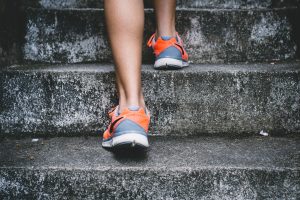 At one time or another, everyone has set up a workout program, going into it with fury, only to abandon it a few weeks later. Sometimes, life got in the way. Sometimes, the program was far too ambitious for the level of fitness. Working out for a few days may help a bit, but won’t give you the results you hope to achieve. The key to any fitness program is consistency. It’s not like writing a paper or reading a book, where you can do it in one day and its done. It’s more like keeping a kitchen or other room clean. It takes consistent work.
At one time or another, everyone has set up a workout program, going into it with fury, only to abandon it a few weeks later. Sometimes, life got in the way. Sometimes, the program was far too ambitious for the level of fitness. Working out for a few days may help a bit, but won’t give you the results you hope to achieve. The key to any fitness program is consistency. It’s not like writing a paper or reading a book, where you can do it in one day and its done. It’s more like keeping a kitchen or other room clean. It takes consistent work.
It takes time to get the body into shape.
Too often people quit their workout program because they aren’t seeing the results they hoped to achieve. In most cases, they haven’t given it enough time. That exercise session helped burn more calories, getting you closer to burning the 3500 it takes to lose one pound. It also boosted your circulation to help you think clearer. That one session also burned off the hormones of stress, while triggering the release of hormones that make you feel good. After just one week, you’ll notice more energy, but to see the changes in muscle mass or drop in weight, you may have to wait up to a month. Muscle growth, weight changes and increased strength and fitness will be obvious after consistently working out for up to six months.
You need to have a schedule and stick with the schedule.
Every commitment or appointment is normally on your calendar or on your phone. Create an appointment for your workout. If you don’t, it won’t happen. Create a consistent schedule, so that it becomes a habit. Whether you exercise in the morning, afternoon or evening, it doesn’t matter, as long as you do it regularly.
Get some help.
There are many different ways to increase the probability of follow through. One of those is having an exercise buddy. A workout buddy holds you accountable, since he or she is actually an appointment. If you skip that appointment, someone knows. It’s a far better solution than just promising yourself you’ll do it. A workout buddy also can push you to work harder and make every workout more fun.
- In order to stick with a workout program, you need to set yourself up for success. Don’t try to get into shape in just one day, it simply won’t work. Some people tend to overdo their first workout, leaving them too sore, tired or even injured to continue.
- If you’re not sure where to start, consider working with a personal trainer, either with private sessions or group sessions. Once you’ve established the workout habit, you can try it on your own if you like.
- If weight loss is your reason for starting a workout program, don’t forget to start eating healthy, too. No matter how much you exercise, you can’t overcome an unhealthy diet.
- On the days away from the gym, stay active. Make it your passion to find ways to get more exercise. Walk more, take the stairs and even create some mini workouts to get your blood circulating after you sat for a while.


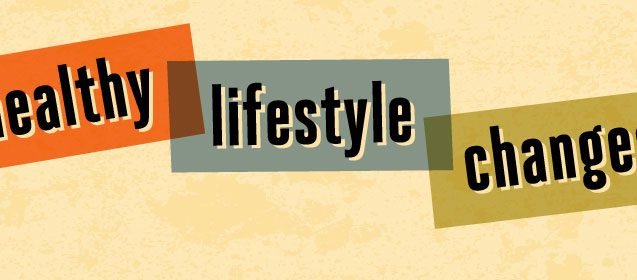
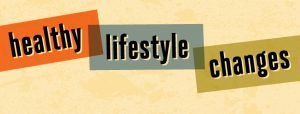 If you’re trying to get fit, you might feel a bit overwhelmed by all the changes you need to make. Don’t be caught in that trap! You can make fitness easier by following a few easy rules and just modifying the things you do everyday a bit. Of course, eating healthy is part of the program and so is regular exercise. You can make doing those two things easier once you get in the groove. Here are a few tips that can make you feel better about healthy living and help you make the adjustments you need to make to maximize fitness benefits.
If you’re trying to get fit, you might feel a bit overwhelmed by all the changes you need to make. Don’t be caught in that trap! You can make fitness easier by following a few easy rules and just modifying the things you do everyday a bit. Of course, eating healthy is part of the program and so is regular exercise. You can make doing those two things easier once you get in the groove. Here are a few tips that can make you feel better about healthy living and help you make the adjustments you need to make to maximize fitness benefits.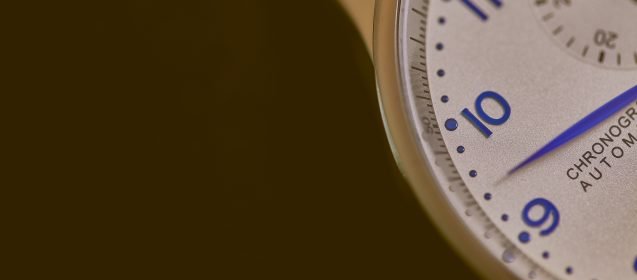
 One thing that definitely will help you shed weight is strength training. If you’re already working out regularly, you’re probably doing it two or three days a week and working different body areas. However, you can boost the effect with a few simple exercises you can do every morning and by changing a few habits you do every day. If you’re like me, you love to stretch the first thing in the morning. I feel like a dynamic stretches get me ready for the day. I also love to add a few quick exercises to the mix, which also boosts my readiness for the day.
One thing that definitely will help you shed weight is strength training. If you’re already working out regularly, you’re probably doing it two or three days a week and working different body areas. However, you can boost the effect with a few simple exercises you can do every morning and by changing a few habits you do every day. If you’re like me, you love to stretch the first thing in the morning. I feel like a dynamic stretches get me ready for the day. I also love to add a few quick exercises to the mix, which also boosts my readiness for the day.
 You probably already know that working out can make you feel better emotionally. It burns off stress hormones and can lift your spirits. What you eat also makes a big difference in your mood. Some foods promote feeling good and others can sabotage that good feeling. Sugar, for example, can get you feeling energized by spiking blood sugar levels, but drop your mood like a rock off a cliff just a few hours later. Simple carbs, like sugar, when eaten frequently can cause you to feel constantly depressed.
You probably already know that working out can make you feel better emotionally. It burns off stress hormones and can lift your spirits. What you eat also makes a big difference in your mood. Some foods promote feeling good and others can sabotage that good feeling. Sugar, for example, can get you feeling energized by spiking blood sugar levels, but drop your mood like a rock off a cliff just a few hours later. Simple carbs, like sugar, when eaten frequently can cause you to feel constantly depressed.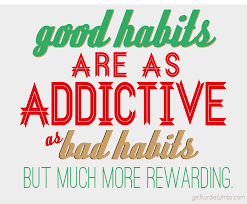
 One of the biggest causes of preventable deaths in the United States is obesity. It affects all parts of the body and has surpassed smoking as the leading cause of preventable illness and death. However, too often we fail to look at another problem faced by many and that’s a sedentary lifestyle. Even if you workout regularly, if you sit for hours at a time at a desk job, without a break every 55 minutes, you’re damaging your health. You need to make moving a habit and schedule a time to get out of your chair and walk across the room or even do exercises next to your desk.
One of the biggest causes of preventable deaths in the United States is obesity. It affects all parts of the body and has surpassed smoking as the leading cause of preventable illness and death. However, too often we fail to look at another problem faced by many and that’s a sedentary lifestyle. Even if you workout regularly, if you sit for hours at a time at a desk job, without a break every 55 minutes, you’re damaging your health. You need to make moving a habit and schedule a time to get out of your chair and walk across the room or even do exercises next to your desk.
 If you haven’t noticed, fall is upon us. With the coming of fall, comes the thoughts of the holidays at the year’s end. Rather than wait to make a New Year’s resolution, it’s time to start now and get what you want this year instead of focusing on what you want for the next year. You can look great for the new year and celebrate in style in San Antonio this year. You’ll also boost your energy level to help make the holidays more fun this year celebration more fun for everyone.
If you haven’t noticed, fall is upon us. With the coming of fall, comes the thoughts of the holidays at the year’s end. Rather than wait to make a New Year’s resolution, it’s time to start now and get what you want this year instead of focusing on what you want for the next year. You can look great for the new year and celebrate in style in San Antonio this year. You’ll also boost your energy level to help make the holidays more fun this year celebration more fun for everyone.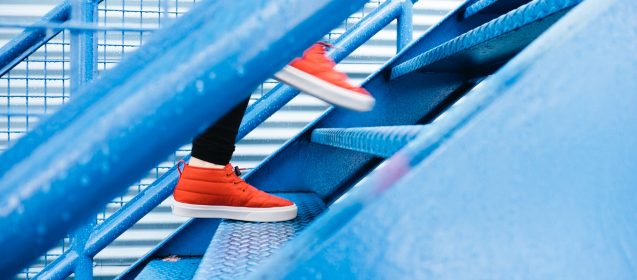
 If you started a program of regular exercise to help you lose weight, good for you. You’re doing something extremely positive to change your lifestyle and ensure a healthier existence. However, regular exercise not only burns calories and builds muscle tissue to help you achieve weight goals quicker. It has some other amazing benefits for the body that not only extends your life, but makes those extra years even better. It adds years to your life and adds life to those years.
If you started a program of regular exercise to help you lose weight, good for you. You’re doing something extremely positive to change your lifestyle and ensure a healthier existence. However, regular exercise not only burns calories and builds muscle tissue to help you achieve weight goals quicker. It has some other amazing benefits for the body that not only extends your life, but makes those extra years even better. It adds years to your life and adds life to those years.
 Dodging common fat loss mistakes can be difficult. Too often people start on a weight loss program, believing they’re doing everything right only to fail or slow their progress. The most common mistake when losing weight is to go on a super low calorie diet or fad diet. Sure the weight comes off quickly, but it doesn’t stay off. Extreme diets can’t be maintained for a long period if you want to remain healthy and when you quit and go back to normal or even moderate eating patterns, the weight comes back with a vengeance. If a diet is below 1000 calories a week, it can actually slow your metabolism and make you lose muscle mass not fat, making it more difficult to keep weight from returning.
Dodging common fat loss mistakes can be difficult. Too often people start on a weight loss program, believing they’re doing everything right only to fail or slow their progress. The most common mistake when losing weight is to go on a super low calorie diet or fad diet. Sure the weight comes off quickly, but it doesn’t stay off. Extreme diets can’t be maintained for a long period if you want to remain healthy and when you quit and go back to normal or even moderate eating patterns, the weight comes back with a vengeance. If a diet is below 1000 calories a week, it can actually slow your metabolism and make you lose muscle mass not fat, making it more difficult to keep weight from returning.
 Wouldn’t it be wonderful if you could eat certain foods and you’d lose weight automatically. Well there are some foods that burn more calories than they contain. These top fat burning foods won’t make up a balanced diet, but they can be added to any diet to boost the results of healthy eating and regular exercise. These foods may have few calories and require more calories to digest than they contain or be thermogenic and build up heat in the body and boost the metabolism for hours after eaten.
Wouldn’t it be wonderful if you could eat certain foods and you’d lose weight automatically. Well there are some foods that burn more calories than they contain. These top fat burning foods won’t make up a balanced diet, but they can be added to any diet to boost the results of healthy eating and regular exercise. These foods may have few calories and require more calories to digest than they contain or be thermogenic and build up heat in the body and boost the metabolism for hours after eaten.
 Have you ever had one of those days when everything goes wrong. It may start innocently enough, maybe by spilling coffee on your work clothes or getting a call from an angry client. From that point on it builds until you’re ready to scream. One way to enhance your mood and shift the whole day to a better track is to change your mind. That’s right. So you spilled your coffee, that doesn’t mean you have to stew about it forever. If your boss or a client puts a bummer into your mood with complaints, focus on fixing the problem or getting to the root of things, rather than how unfair they’re treating you. It’s all about state of mind. Looking for the positive in every situation helps.
Have you ever had one of those days when everything goes wrong. It may start innocently enough, maybe by spilling coffee on your work clothes or getting a call from an angry client. From that point on it builds until you’re ready to scream. One way to enhance your mood and shift the whole day to a better track is to change your mind. That’s right. So you spilled your coffee, that doesn’t mean you have to stew about it forever. If your boss or a client puts a bummer into your mood with complaints, focus on fixing the problem or getting to the root of things, rather than how unfair they’re treating you. It’s all about state of mind. Looking for the positive in every situation helps.